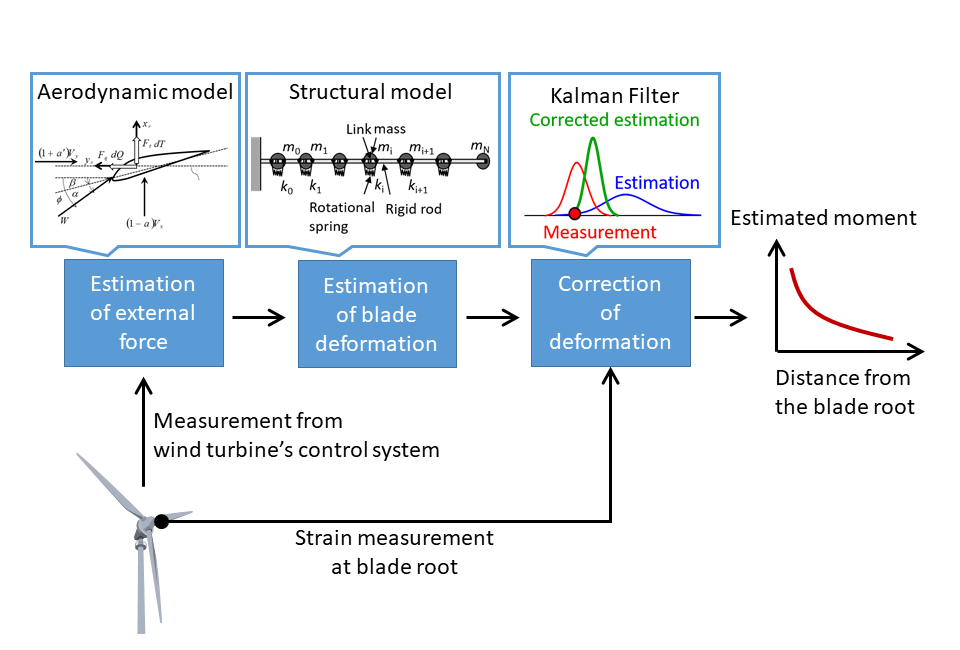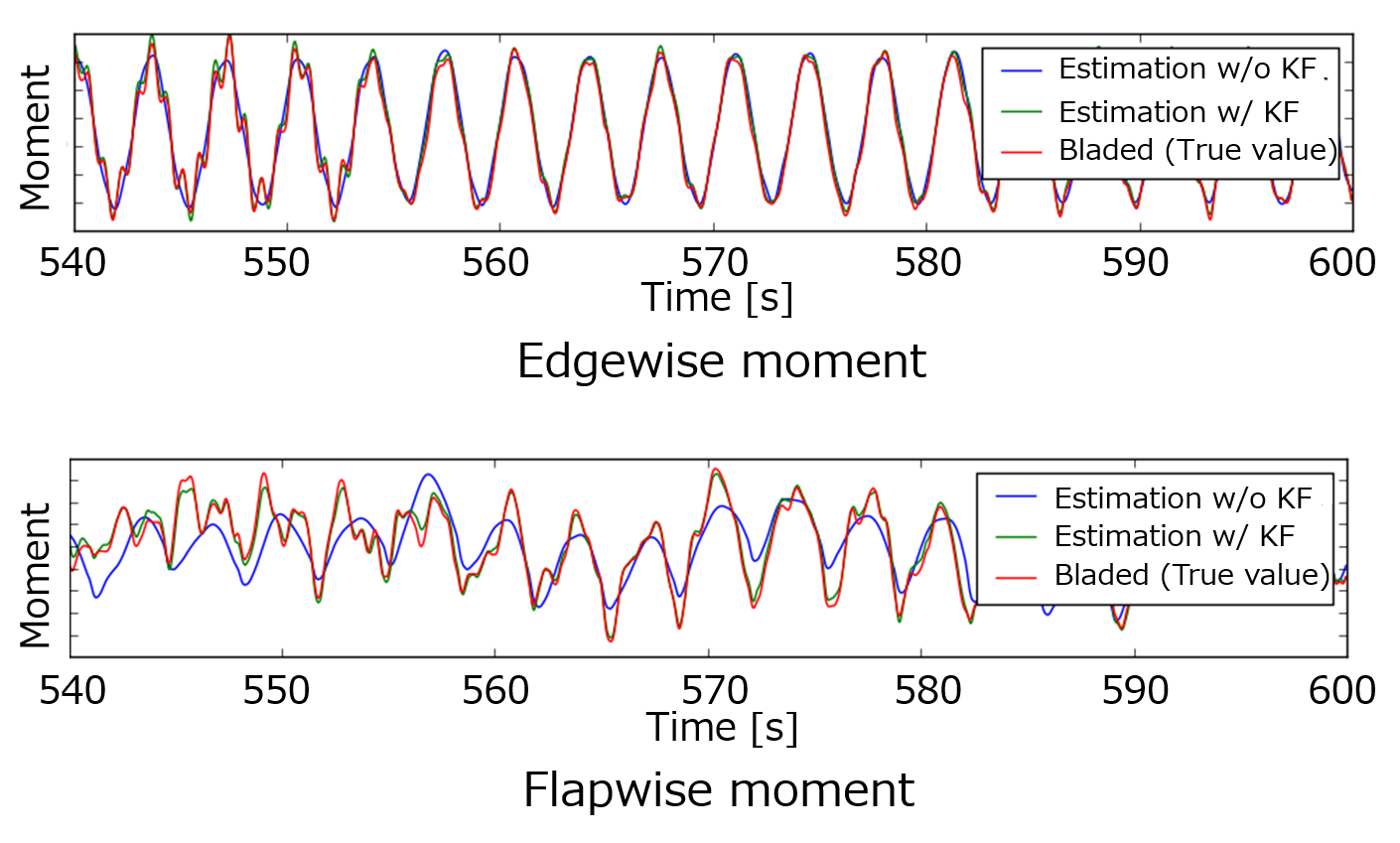22 June 2021

Kazuo Muto
Research & Development Group, Hitachi, Ltd.

Nobuo Namura
Research & Development Group, Hitachi, Ltd.

Yosuke Ueki
Research & Development Group, Hitachi, Ltd.

Norio Takeda
Research & Development Group, Hitachi, Ltd.
To reduce emission of CO2 and to prevent global warming, it is important to introduce more renewable energy resources. A wind turbine is one of the most promising renewable energy resources its use has been limited because it is still expensive, i.e. the total cost of producing energy by wind turbines is still higher than through conventional energy resources.
Recently, the lifetime extension of wind turbines has increasingly attracted attention as one way to reduce levelized cost of energy. To explain, generally, wind turbines are designed under the wind condition defined by design standards such as the International Electrotechnical Commission (IEC), however, real wind conditions do not always correspond to the design condition. Therefore, the actual lifetime of wind turbines can be extended when the real wind condition is less severe than the design condition. For the lifetime extension, however, it is important to have an accurate evaluation of remaining useful lifetime (RUL). To accurately evaluate RUL, we should know historical data of loads applied to a structure of wind turbine but unfortunately, often there are not enough sensors to provide a full set of data to evaluate the loads. Thus, while the simple solution would be to add more sensors for the load evaluation, this would defeat the purpose as it would entail additional costs, and thus reduce the goal of trying to reduce the levelized cost of energy through lifetime extension. So, the challenge is to accurately estimate the load from the sensor data available.
Previous studies of load estimation for wind turbines have mainly focused on support structures. There are a few studies, however, that have focused on the blades. We decided to investigate a load estimation method for the wind turbine blades, as they are a critical structure in generating energy from wind.
With our proposed load-estimation method, the wind speed and direction at the nacelle top are used to estimate the rough estimation of the external force to the blades together with the aerodynamic model. Based on the estimated wind condition, the external load on the blade is then calculated. The blade structural model is used to estimate the deformation corresponding to the external force and its estimation is updated using the strain measurement of the blade root. The blade moment is then calculated from the estimated deformation. The numerical simulation is employed to validate the proposed method.
We constructed an aerodynamic and a structural model of the wind turbine as a “digital twin” and used it to estimate the loads on the blades. Figure 1 shows the overview of our proposed method.

Figure 1: Overview of proposed method.
First, an external force is estimated from measurement data of the wind turbine’s control system (Supervisory Control and Data Acquisition, SCADA): a wind speed and a wind direction at the nacelle top, a rotor rotational speed, a rotor azimuth angle and the blade’s pitch angle.
The external force acting on the blade is divided into mainly three forces: an aerodynamic, a gravity and a configural force. The gravity and the configural force can be calculated easily from the measurement data because they depend only on the movement of the blades. On the other hand, the aerodynamic force depends not only on the movement of the blade but also a wind condition around the wind turbine. So, we should estimate the wind condition, but information available to capture the wind condition are only the wind speed and direction at the nacelle top. So, in this step, we can only calculate “rough” estimation of the wind condition and corresponding aerodynamic load with an aerodynamic model of the blade.
Once, the external force is estimated, corresponding deformations of the blades are calculated with a structural model of the wind turbine. In our study, we modeled the blade structure as a multi-body system. As mentioned above, the estimated external force is not precise because of the lack of information about the wind condition. Therefore, simply using the blade structural model and the estimated external force to calculate the deformation does not give an accurate estimation. So, we corrected the calculated deformations based on a strain measurement of the blades’ root. We used the Kalman Filter to correct the calculated deformation based on the strain measurement. We then calculated the blade loads from the corrected deformation.
We applied the method to a Hitachi 2MW Wind Turbine, which is designed for a downwind configuration, and conducted a numerical simulation to validate our proposed load estimation method. We used DNV-GL Bladed, wind turbine simulation software which can generate 3-dimensional wind conditions and calculate the corresponding dynamic response of the wind turbine. A wind turbine model of Hitachi 2MW Wind Turbine was used to generate pseudo measurement data and true values for the validation.
Figure 2 of the first row shows time series data of an edgewise bending moment and the second row shows time series data of a flapwise bending moment when the wind speed is 15.0 m/s. The edgewise moment is caused by blade deformation within a rotor plane which is the plane the blades wipes, almost perpendicular to the ground. The flapwise bending moment is caused by blade deformation perpendicular to the rotor plane. “Estimation w/o KF” represents the result uncorrected by the Kalman Filter and “Estimation w/ KF” is the corrected estimation. “Bladed” denotes the calculation results from Bladed and is regarded as the “true value” here.
The edgewise bending moments change periodically due to the rotation of the blade. From the first row of Figure 2, the estimation results of the Estimation w/o KF and that of Estimation w/ KF are almost consistent with the true value. This is because the external force for the edgewise bending moment is mainly caused by the gravity load which is determined by the blade movement. Hence the influence of the estimation error of the external force is relatively small and the corresponding error of the bending moments also small.
As well as the edgewise bending moment, the flapwise bending moment is influenced by the blade rotation. However, the flapwise bending moment is more sensitive to changes in the aerodynamic load than the edgewise bending moment. From the second row of Figure 2, Estimation w/o KF could capture the periodical moment changes due to the blade rotation, however, it failed to capture the small fluctuations caused by changes in wind condition. Because the edgewise bending moment is influenced more by the aerodynamic load, the estimation error of the flapwise bending moment was larger than that of the edgewise bending moment. On the other hand, the proposed method was able to capture both the periodical moments change and the small fluctuations, which resulted in a better estimation.

Figure 2: Time series data of edgewise bending moment and flapwise bending moment at a 15.0 m/s wind speed.
In summary, we constructed an aerodynamic and structural model of a wind turbine as a “digital twin,” and used it to estimate the loads on the wind blades. The results indicated that our proposed load-estimation method provides good estimations consistent with the true moment calculated by the simulator. For more details, we encourage you to read our paper.[2]